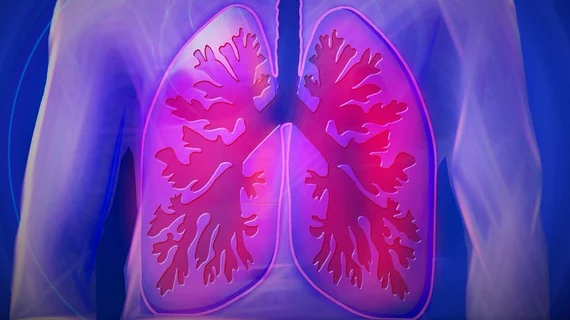Ozone, other pollutants increase odds of emphysema
Long-term exposure to ambient air pollutants—especially ozone—increase a person’s chance of developing emphysema, according to research published August 13 in the Journal of the American Medical Association.
Meng Wang, PhD, of the University of Washington and University at Buffalo, led the study, which examined lung function in 5,780 participants across a decade. Subjects were drawn from the Multi-Ethnic Study of Atherosclerosis (MESA) Air and Lung Studies database, which spans six metropolitan regions of the U.S. and has tracked enrollees for nearly two decades.
Wang et al.’s work is far from our first look into how pollution impacts CV health—numerous other studies have explored the question and found that, among other things, air and traffic pollution can raise people’s odds of death, heart disease, type 2 diabetes and even anxiety. Instead, the authors geared their focus toward the lungs, asking themselves what long-term impact pollution might have on lung function and chronic lower respiratory diseases like pulmonary emphysema.
“The relationship of air pollution exposures with respiratory morbidity and mortality has been documented in the short-term and, by a more limited number of prospective cohorts, in the long-term,” Wang and colleagues wrote in JAMA. “There is elevated risk of death associated with ozone (O3) and fine particulate matter less than 2.5 microns in aerodynamic diameter (PM2.5) exposure in patients with COPD and a faster decline in lung function associated with long-term exposure to traffic-related air pollutants in healthy populations.”
The team tracked percent emphysema—the percentage of lung pixels less than -950 Hounsfield units as measured on a CT scan—in all patients over an average of 10 years, paying attention to not only O3 and PM2.5 but also oxides of nitrogen (NOx) and black carbon. After baseline measurements, all participants received at least one follow-up CT and 2,772 had at least one follow-up spirometric assessment.
The study population’s average percent emphysema was 3% at baseline and increased a mean of 0.58 percentage points per 10 years. The authors found that mean ambient concentrations of PM2.5 and NOx—but not O3—decreased “substantially” during follow-up.
According to Wang et al.’s findings, ambient concentrations of O3, PM2.5, NOx and black carbon at baseline were all associated with greater increases in percent emphysema per 10 years:
- O3: 0.13 per 3 parts per billion
- PM2.5: 0.11 per 2 micrograms per cubic meter of air
- NOx: 0.06 per 10 parts per billion
- Black carbon: 0.10 per 2 micrograms per cubic meter of air
Ambient O3 and NOx concentrations, but not PM2.5 concentrations, were linked to greater increases in percent emphysema during follow-up. Ambient O3 alone was associated with a greater decline in forced expiratory volume in 1 second per 10 years, both at baseline and during follow-up.
“Findings were most robust and of greatest magnitude for O3,” Wang and colleagues wrote. “Because percent emphysema is related to respiratory symptoms, hospitalizations and mortality even among individuals without airflow obstruction, these associations in a community-based population demonstrate novel evidence that air pollution contributes to worsening lung health.”
The authors said that despite existing regulations designed to prevent short-term excursions of O3 levels, long-term average concentrations of O3 persisted throughout the study. Unless policymakers implement new, more effective control strategies, they wrote, it’s a statistic that probably won’t change.
“This contrasts with the observed trends in PM2.5 and NOx that highlight the success of past regulatory initiatives to control these two pollutants,” the team wrote. “Because long-term concentrations of O3 at current levels were strongly and consistently associated with both progression of emphysema and decline in lung function in this study, more effective control strategies to reduce O3 concentrations may be needed to protect lung health.”

